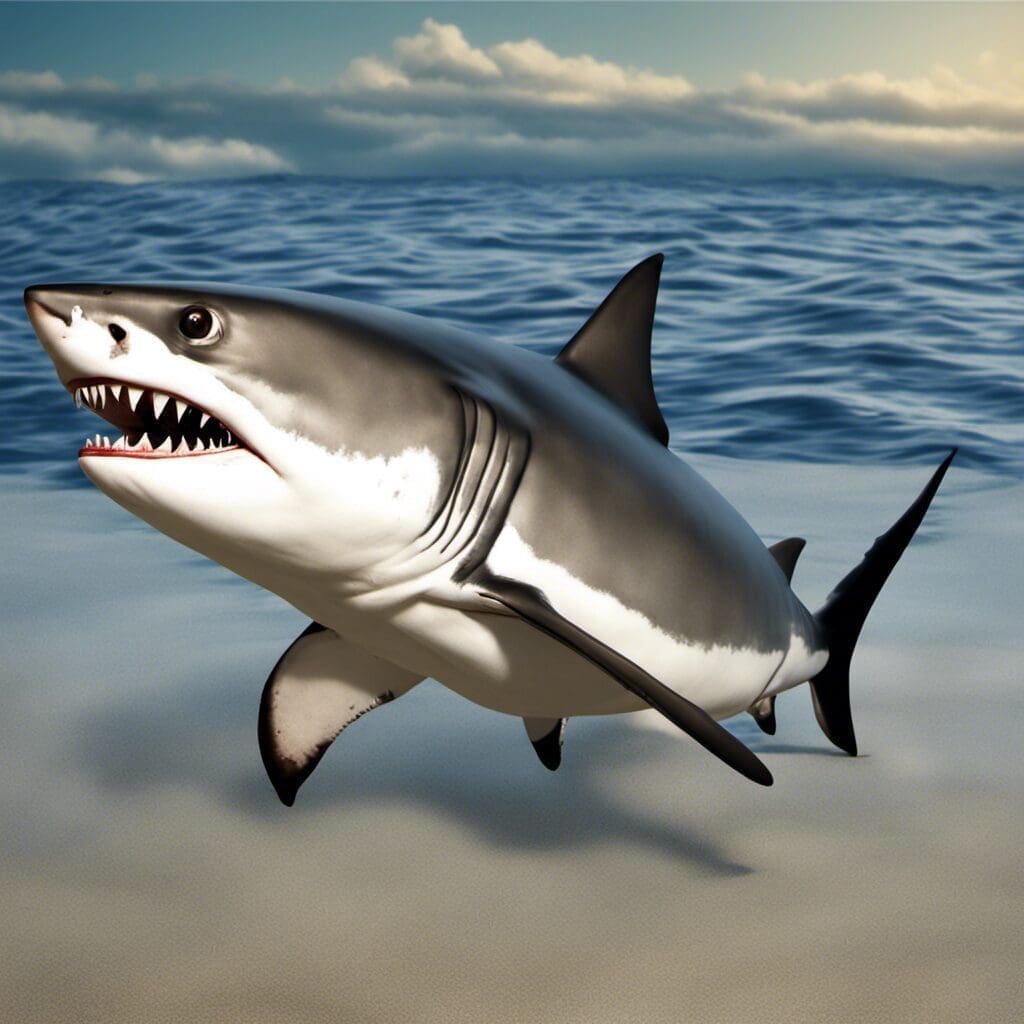Introduction
The Porbeagle shark, scientifically known as Lamna nasus, is a species belonging to the Lamnidae family of mackerel sharks. The Porbeagle shark is known for its sturdy structure, conical nose, and large pectoral fins.
Conservation Status
Currently, the Porbeagle shark is listed as Vulnerable by the International Union for Conservation of Nature (IUCN). Since the late 1960s, the Porbeagle population has been heavily affected by commercial fishing practices. Today, multiple conservation efforts are enforced to protect the declining species.
Statistics
| Length | Weight | Average Lifespan |
|---|---|---|
| Average: 3.5m, Range: 1.5-4m | Average: 150kg, Range: 135-230kg | 25-45 Years |
Distribution
The Porbeagle shark can be found in temperate and cold-temperate waters across the Atlantic Ocean, from Newfoundland to Argentina in the west, including the Mediterranean Sea, and from Norway to South Africa including the Mediterranean and Black sea in the east. They tend to migrate toward the poles for the warm summer season and equatorward during the colder winter months.
Habitats
Porbeagle sharks prefer the subtropical or cool, offshore waters. They typically inhabit waters down to 200 m but have occasionally been recorded as deep as 1360 meters. These sharks favor colder water temperatures, between 1°C to 18°C.
When and Where to See
In the months of May till late August, Porbeagle sharks tend to be closer to the shorelines, making it an ideal time to observe them. Early morning or late afternoon is best.
Best Fishing Locations
Porbeagle sharks can be found at numerous locations worldwide. Some of the top fishing spots include:
- Nova Scotia, Canada
- Cornwall, England
- Ireland’s West Coast
- Newfoundland, Canada
- Massachusetts, USA
- Northern Spain
- New Zealand
- South Australia
Fishing Tips
Porbeagles are open water species, they are often found hunting near the surface and can be spotted by looking for active birds or slick spots on the water’s surface.
How to Catch
While they can be caught with various baits and lures, the most successful method appears to be the use of live or fresh baits such as mackerel, herring, or squid. Trolling, or slowly drifting with bait, is an effective strategy to catch Porbeagle sharks.
Identification Guide
Porbeagle sharks are easily identified by their stout body, conical snout, and large pectoral fins. A unique feature is their crescent-shaped, almost symmetrical tail and white belly with a darker back.
Culinary
Porbeagle meat is known for its rich taste and can be cooked in a variety of ways, such as grilling, baking, or frying. Its flavor profile is said to have a mild sweetness with a meaty texture, comparable to swordfish or tuna. However, due to conservation concerns, consumption of Porbeagle shark is generally discouraged.
Additional Information
Porbeagle sharks are solitary hunters, feed on a diet of bony fishes and squids. One of their unique hunting behaviors involves striking their prey at high speeds. The biggest threat to Porbeagle sharks comes from commercial fishing. They have historically been hunted for their meat, fins, and liver oil.
References and Further Reading
Sources:
- NOAA Fisheries
- Florida Museum
- MarineBio
Recommended readings:
- “Sharks of the World” by Leonard Compagno, Marc Dando, and Sarah Fowler
- “Sharks: An Eponym Dictionary” by Michael Watkins and Bo Beolens

